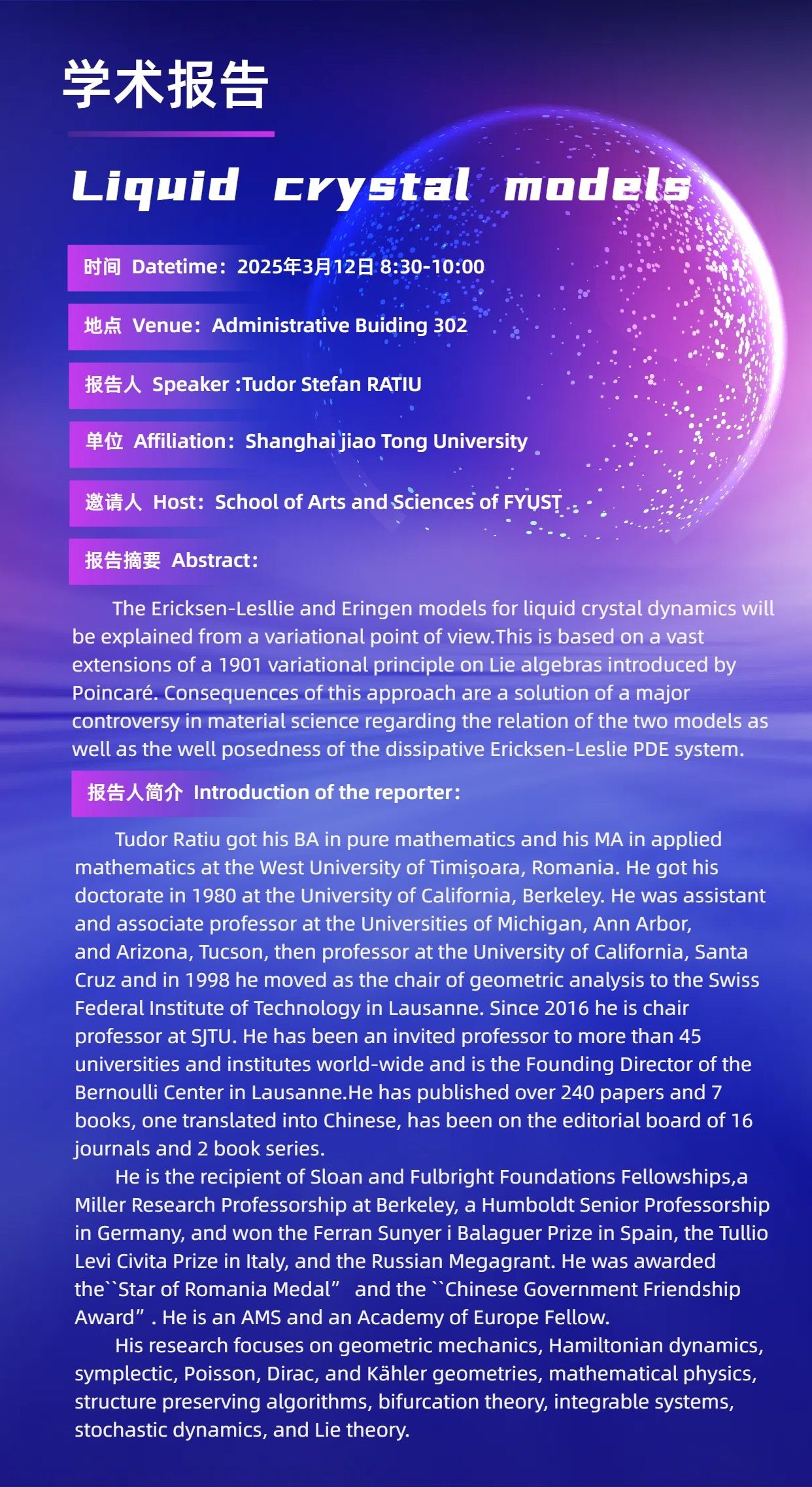
时间Datetime : 2025-3-12 8:30-10:00
地点Venue: Administrative Building 302
报告人Speaker :Tudor Stefan RATIU
单位Affiliation:Shanghai Jiao Tong University
邀请人Host:School of Arts and Sciences of FYUST
报告摘要Abstract:
The Ericksen-Leslie and Eringen models for liquid crystadynamics will be explained from a variational point of view.This is based on a vast extensions of a 1901 variational principle on Lie algebras introduced by Poincaré. Consequences of this approach are a solution of a major controversy in material science regardingthe relation of the two models as well as the well posedness of thedissipative Ericksen-Leslie PDE system.
报告人简介
Tudor Ratiu got his BA in pure mathematics and his MA inapplied mathematics at the West University of Timisoara, Romania. He got his doctorate in 1980 at the University of California, Berkeley. He was assistant and associate professor at the Universities of Michigan, Ann Arbor, and Arizona, Tucson, then professor at University of California Santa Cruz and in 1998 he moved as the chair of geometric analysis to the Swiss Federal institute of Technology in Lausanne. Since 2016 he is chair professor at SJTU. He has been an invited professor to more than 45 universities andinstitutes world-wide and is the Founding Director of the Bernoulli Center in Lausanne. He has published over 240 papers and 7 booksone translated into Chinese, has been on the editorial board of 16 journals and 2 book series.
He is the recipient of Sloan and Fulbright FoundationsFellowships, a Miller Research Professorship at Berkeley, a Humboldt Senior Professorship in Germany, and won the Ferran Sunyer i Balaguer Prize in Spain, the Tullio Levi Civita Prize in ltaly, and the Russian Megagrant. He was awarded the "Star of Romania Medal" and the "Chinese Government Friendship Award". He is an AMS and an Academy of Europe Fellow.
His research focuses on geometric mechanics, Hamiltoniandynamics, symplectic, Poisson, Dirac, and Kahler geometries, mathematical physics, structure preserving algorithms, bifurcationtheory, integrable systems, stochastic dynamics, and Lie theory.